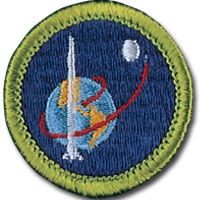SpaceX - Iridium-1 Launch






Space Exploration Merit Badge Supplementals
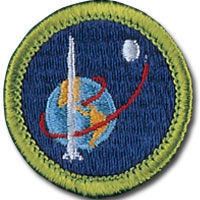
(created Sun. Jan. 14, 2017)
This is an extension of
the Space Exploration Merit Badge page.

The purpose of this page is to show images from the Jan. 14, 2017 SpaceX launch of ten (10) Iridium satellites, and the successful landing of the first stage on the Just Read The Instructions (Pacific Ocean) autonomous spaceport drone ship.
This page starts with an overall SpaceX goal, describes a September loss that led to the launch being on Jan. 14, 2017.
The reason I am highlighting this launch is because it is the first all four of us in our family watched together, and because, since it was a Saturday afternoon, a lazy one at that, I was able to capture some good images, and share them with you via this site/page.
The information on this page is NOT required for the Space Exploration Merit Badge.
The information on this page is shared to provide additional insights into the space exploration and to encourage enthusiasm about all that is exciting about the exploring the universe beyond our planet, in person and through unmanned spacecraft.


This page starts with an overall SpaceX goal, ...
One of SpaceX’s goals is to lower the cost of space exploration by reusing launch vehicles.
Their first successful launch-and-landing of a first stage was on December 21, 2015, when the first stage of the Orbcomm-2 LOE mission landed on the Atlantic Ocean-based “Of Course I Still Love You” landing pad (see also: https://en.wikipedia.org/wiki/Autonomous_spaceport_drone_ship).
Given that was Christmas week, I missed the news until Dec. 26, at which point all four of us watched the rebroadcast of the webcast, together.
Since then I followed the launches, and the first stage landings, as closely as possible, and also share videos of some on another page on this site: http://vanvooren.us/MeritBadges/SpaceX.html.
... and continues to describe a September, 2016 loss...
In September, 2016, after several successful launches, SpaceX was performing a routine test for its next mission, which would launch the AMOS-6 satellite (aka the “Facebook Satellite), as...
“in October 2015, social media company Facebook and satellite fleet operator Eutelsat agreed to pay Spacecom $95 million over a period of about five years for the lease of the Ka-band spot-beam broadband capacity—36 regional spotbeams with a throughput of about 18 Gbit/s—on Amos-6 to provide service for Facebook’s Internet.org and a new Eutelsat subsidiary focusing on African businesses.[1] ”
source: https://en.wikipedia.org/wiki/Amos-6
This was not a launch failure, but a loss of the rocket and its payload on the launch pad days before the planned launch.
“Destruction[edit]
“On 1 September 2016, the Falcon 9 launch vehicle suffered an anomaly during fuel loading for a routine static fire test that destroyed the vehicle and its AMOS-6 payload.[4] The explosion started near the upper stage LOX (Liquid oxygen) tank. Because the satellite was destroyed prior to the launch, the cost of the satellite is not covered by Spacecom's insurance policy, but rather by the manufacturer, IAI. IAI has its own insurance, and will file a claim in order to compensate Spacecom. Spacecom's contract with SpaceX specifies Spacecom can choose to receive $50 million, or a future flight at no cost.[9][10]
“A number of serious theories as to the cause of the anomaly had been put forward by industry technical experts by mid-October. Most deal with issues in and around the carbon-fiber composite-overwrapped pressure vessel (COPV) that is used to hold the 34,000–38,000 kPa (5,000–5,500 psi)-helium tank that contains the pressurant used to provide LOX propellant tank pressure during launch. As of 16 October 2016, the formal accident investigation board has not yet released its findings.[11] News reports in early November indicated that SpaceX has determined root cause for the anomaly, and that it is straightforwardly fixable, and that SpaceX will return to flight in December 2016.[12] SpaceX CEO Elon Musk's comments on 4 November 2016 indicate that the propellant loading process appears to have allowed some of the liquid oxygen to turn to the solid phase, which reacted with the carbon in the carbon-fiber pressure vessel, resulting in the deflagration.[13] On 2 January 2017, SpaceX released an official statement indicating that the cause of the failure was a buckled liner in several of the COPV tanks, causing perforations that allowed liquid and solid oxygen to accumulate underneath the lining, which was ignited by friction. [14]”
source: https://en.wikipedia.org/wiki/Amos-6
Additional stories / articles about the lost rocket and satellite can be found at: http://www.spaceflightinsider.com/?s=amos-6.
...that led to the Iridium launch on Jan. 14, 2017.
The subsequent investigation delayed upcoming launches.
I monitored Spaceflight Insider’s website - http://www.spaceflightinsider.com/ - to determine the next launch and learned the next launch was planned for Sat., Jan. 14 2017, when SpaceX would launch the fist 10 or 80 Iridium communications satellites.
More about the mission details are provided in the Press Kit: http://www.spacex.com/sites/spacex/files/spacex_iridium1_press_kit.pdf
St. Louis experienced a bit of an ice storm a couple days prior, and while the roads were quite clear, the trees and ice were still covered, so many Saturday activities were cancelled and all four of us were home and were able to see the launch together. (!!!)
Links to three videos are below, and photos captured on the iPad are below these links.

-
1.Jan. 14, 2017 (Iridium-1 Hosted Webcast)
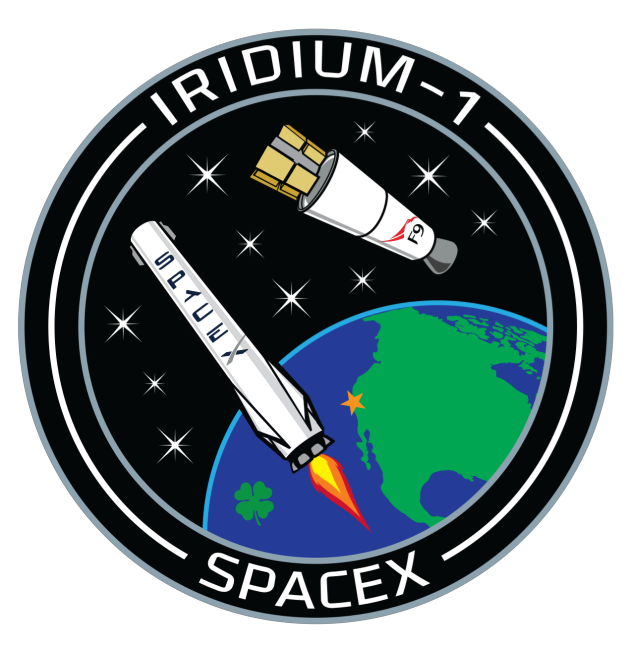
Iridium-1 Technical Webcast
(1:39 minute version)
“SpaceX Land Falcon 9 Rocket on Ocean Barge after Iridium Launch NEXT Flight 1)”
(3-minute version)
https://www.youtube.com/watch?v=PZ0EmJ9DlQk
“SpaceX’s Falcon 9 Soars Skyward With 10 Iridium NEXT Satellites”
(article, not a video)
I also posted these photos to Facebook (something I don’t do often).
This is the intro to these photos:
SpaceX's launch of ten (10) Iridium satellites this morning (Jan. 14, 2017).
These photos are iPad print screens / screenshots... captured on one device, the iPad,
while the iPhone separately "broadcast" the video to the television via Apple TV.
(both in high def, while Abby separately played a game on the iMac... all at the same time, thanks to Charter's nation's fastest internet + WiFi).
Another awesome:
-
-SpaceX launch, this time from Vandenberg AFB (just north of Los Angeles, with the launch to the South)
-
-and first stage landing, on the Pacific-based Just Read The Instructions landing pad
-
-and satellite deployment - this time 10 Iridium NEXT satellites deployed into earth orbit approximately from Saudi Arabia to over Russia (at least where they left the SpaceX Falcon second stage)
(see also http://www.spacex.com/…/spacex/files/spacex_iridium1_press_… for the Press Kit)
The overall trajectory was... launch from Vandenberg AFB, north of Los Angeles, south across the Pacific, over Antarctica within 45-60 min, then north past the eastern coast of Africa / over the Indian Ocean just east of Madagascar, over Arabia and then the Ukraine and Russia... all in ~ two hours and 15 minutes.
These photos... the launch and climb to orbit.






These photos... are the first stage returning from orbit to successfully land on the drone ship, Just Read The Instructions.













These photos... are the trajectory of the second stage and the Iridium satellites, as they were deployed.












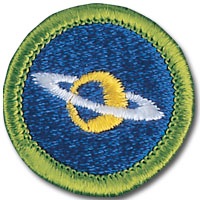
These are all of the links to the Astronomy Merit Badge pages:
Astronomy Merit Badge - Extra “Fun Facts”
Astronomy - Great American Eclipse
Astronomy - Great American Eclipse 2017

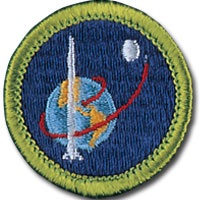
These are all of the links to the Space Exploration Merit Badge pages:
New Horizons - Mission Overview
New Horizons - Pluto Resources


All images were scanned directly from the magazine using the Halo Scanner Mouse - http://shop.halo2cloud.com/collections/computer-and-backup/products/scanner-mouse, which I received as a Christmas present from my mother in 2013.



Regardless your desire to pursue a career in space exploration, it is hoped that you learned enough about exploring space through this merit badge to at least be interested to continuously look up at the sky in awe and wonder, and think about what you may want to explore if you were to go “out there” or were to send a probe “out there.”
If you pursue with enthusiastic interest, that’s great. If you do make a career in the field, GREAT.
May all be better off having completed your Space Exploration Merit Badge than you were before you started.
